The International Typesetting Machine Company started around 1912 with the production of the Intertype, a machine resembling the Linotype but with many improvements. During the years, they built several models. An overview is found below. If a certain model was extended with additional side magazines, then the letters s.-m. (side-magazine) were added to the model number.
Model A was a machine with one magazine and one distributor.
Model B is a machine identical to model A, but had two magazines.
Model C is a machine identical to model A, but had three magazines.

Photo: Intertype C3 at the graphic design department of Hasselt University, Belgium.
This machine is an extension of model C and has four magazines with 90 channels.
The specification 'streamlined' points out that all the moving parts are shielded, and that additional technical improvements were made.
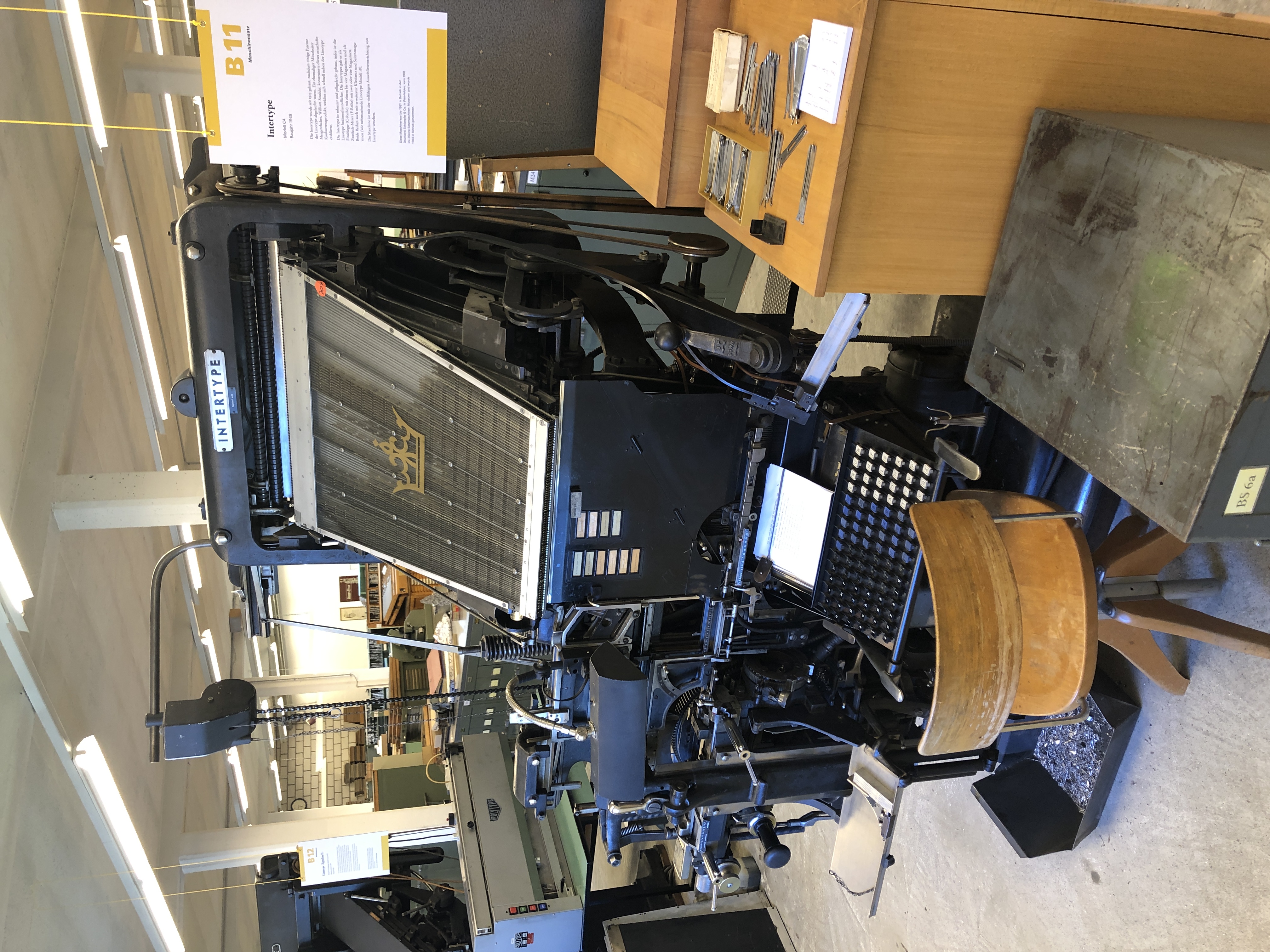
Photo: the Intertype C4 at Typorama, Switzerland.
Model D is a machine identical to model C, but is constructed in such a way that longer lines could be cast (The Dutch Literature mentions 'longer than 28 augustijn').
Model E has two main magazines and a double distributor.
Model F is an improvement of model E, replacing model E. It is lower in height.
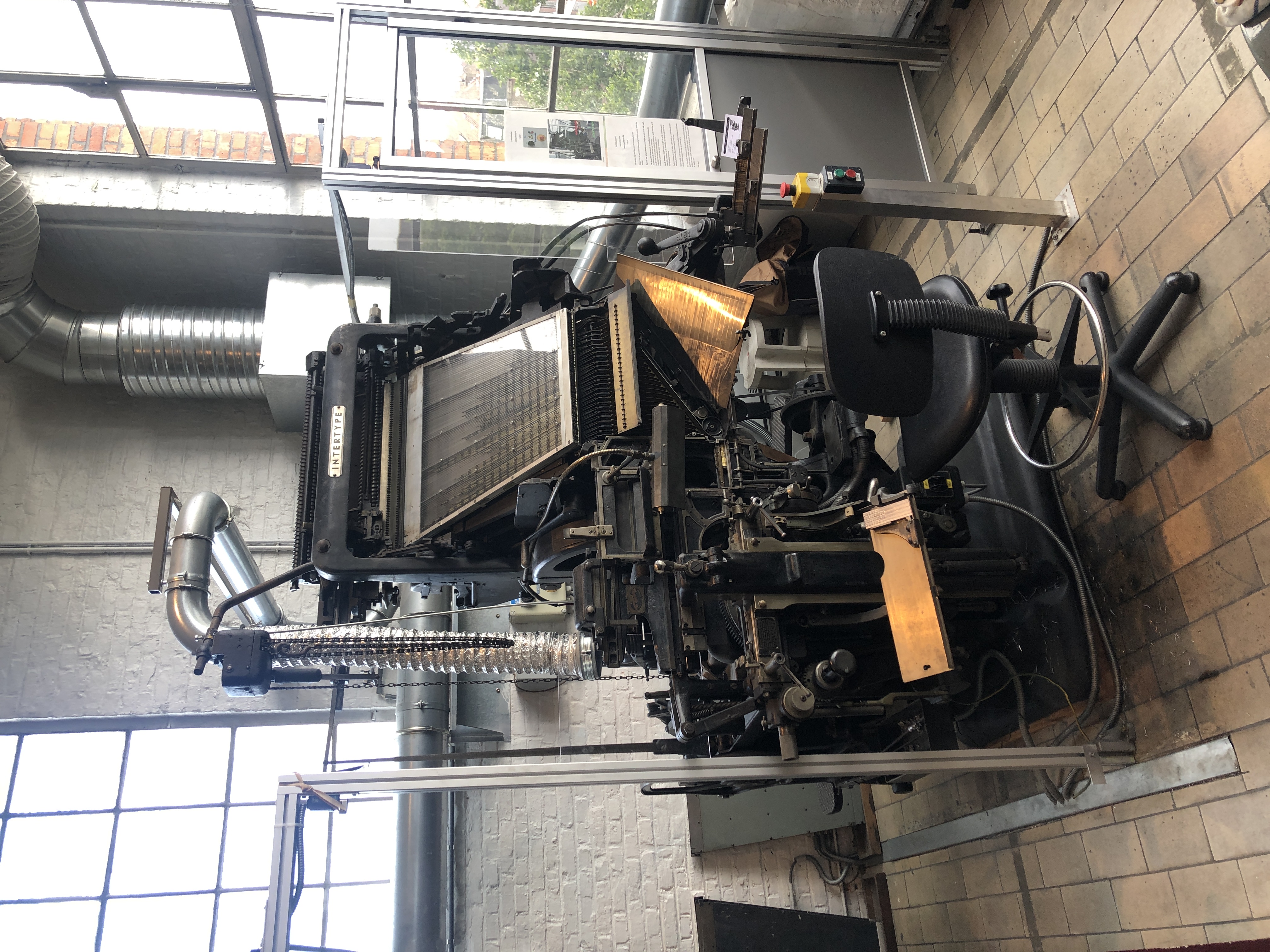
Photo: the fotosetter at the Industrial Museum, Ghent, Belgium.
This machine is an extension of model F and has four magazines. It is comparable to the American Linotype model 29.
The specification 'streamlined' points out that all the moving parts are shielded, and that additional technical improvements were made.
Model G is identical to model F, except that one magazine has 72 channels suited for larger type sizes.
This machine is an extension of model G which has four magazines with 90 or 72 channels. A lamp shines when there are matrices in the distribution, warning the operator that the magazines cannot be changed yet.
The specification 'streamlined' points out that all the moving parts are shielded, and that additional technical improvements were made.
This model is intended for the advertising industry due to its 72 channel magazines. It has one distributor and three magazines.
The Intertype sales person Spencer (n.d.) compares this machine to the Linotype model 28.
The model X was a factory rebuild Linotype, 'thoroughly reconstructed and modernized with Intertype Parts and Improvements', carrying two Intertype magazines. Changing the magazine was done simply with a lever. Magazines are interchangeable with the magazines used on an Intertype model A or B.
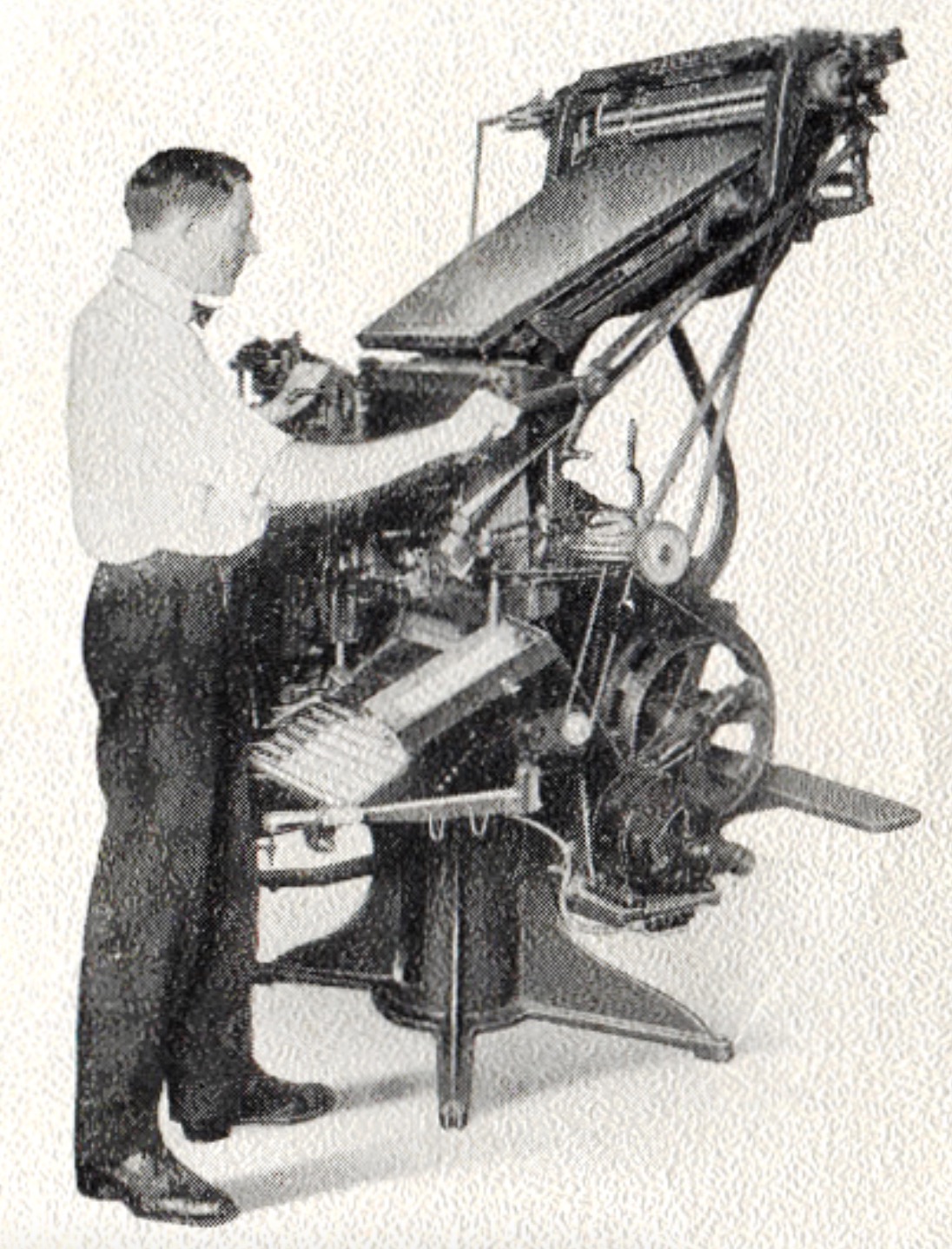
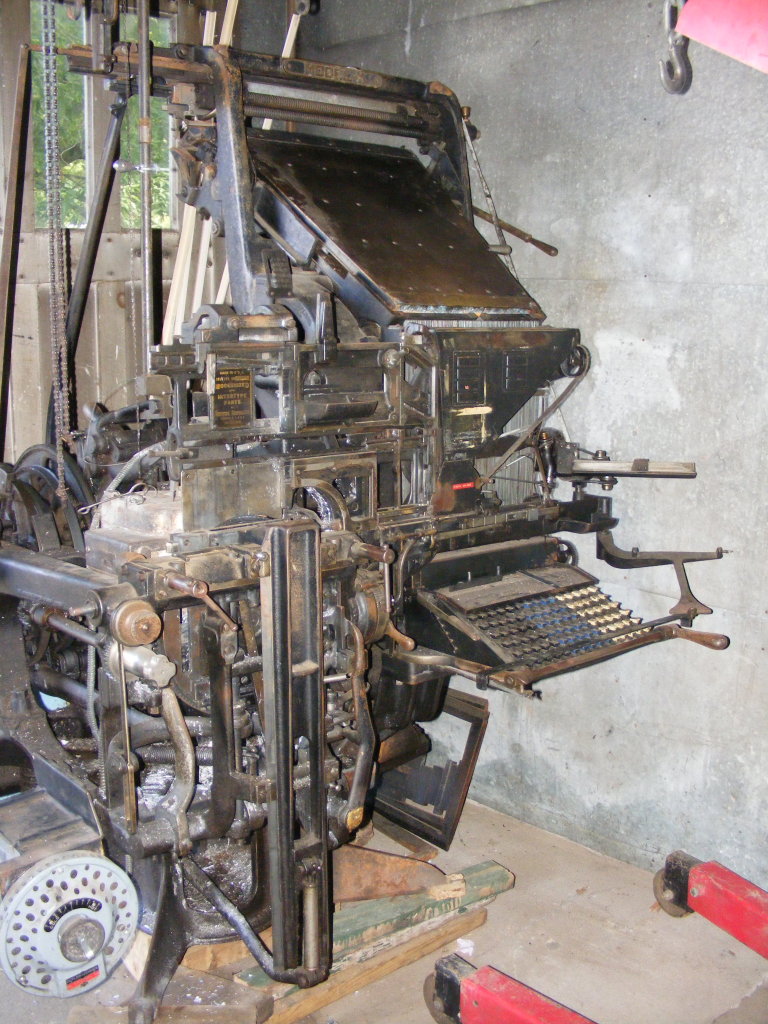
Photos: The Intertype Model Z as illustrated in Intertype Corporation, n.d., and the Intertype Model x from David MacMillan.
The model Z was a factory rebuild Linotype, 'thoroughly reconstructed and modernized with Intertype Parts and Improvements', carrying one standard Intertype magazine.
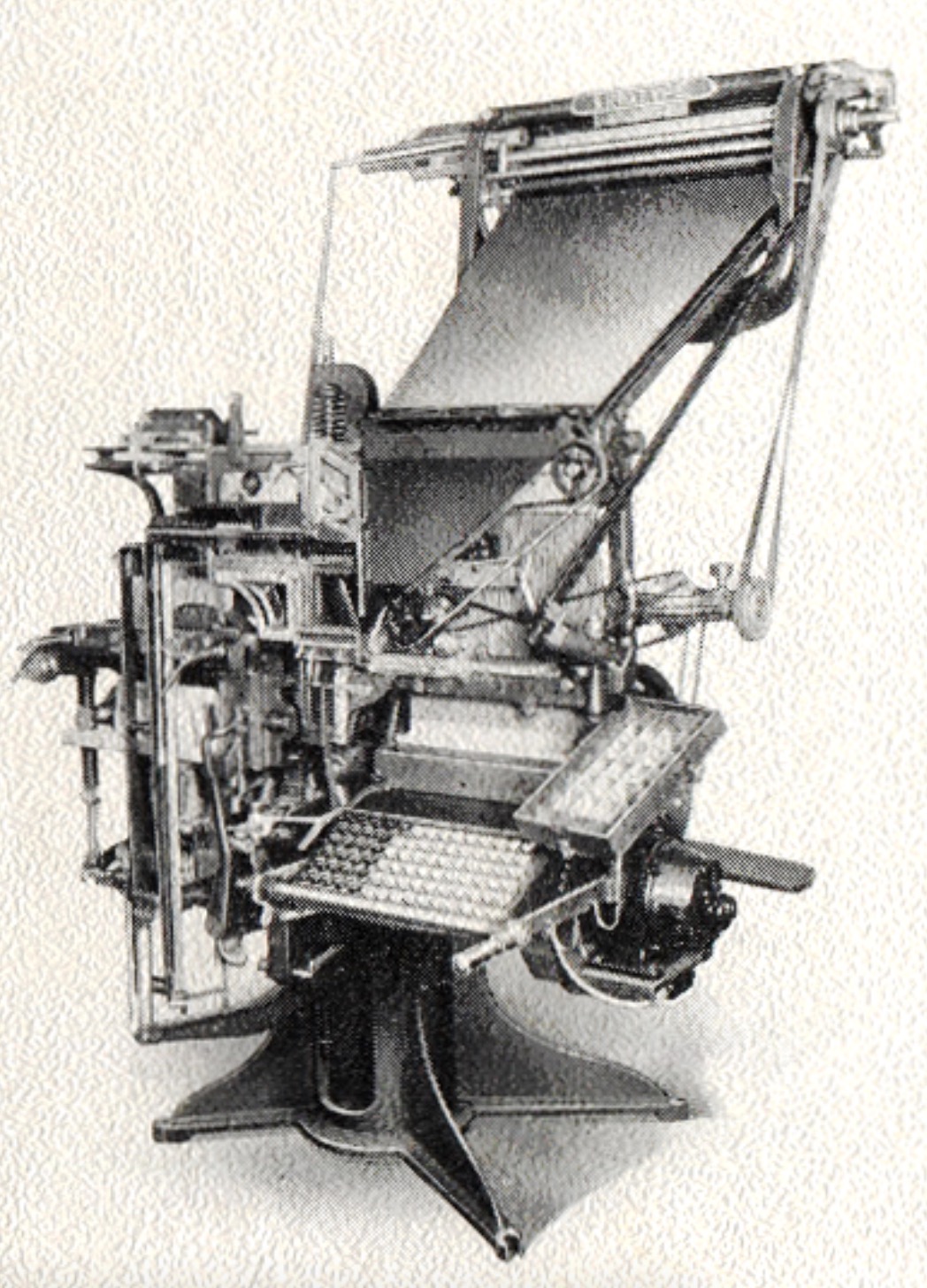
Photo: The Intertype Model Z as illustrated in Intertype Corporation, n.d.
This machine is an extension of model F and has four magazines with 72 channels.
The Intertype Monarch was the competitor to the Linotype Elektron. But where the Electron often was poorly regarded by operators, the Monarch was often much more highly regarded by operators.
Gradually, new technologies replaced the hot metal casting. From 1950 on, Intertype started selling the Fotosetter as the future (read more about it here). The fotosetter does not cast lines in lead. The metal pot is replaced by a camera which photographs each matrix character separately.
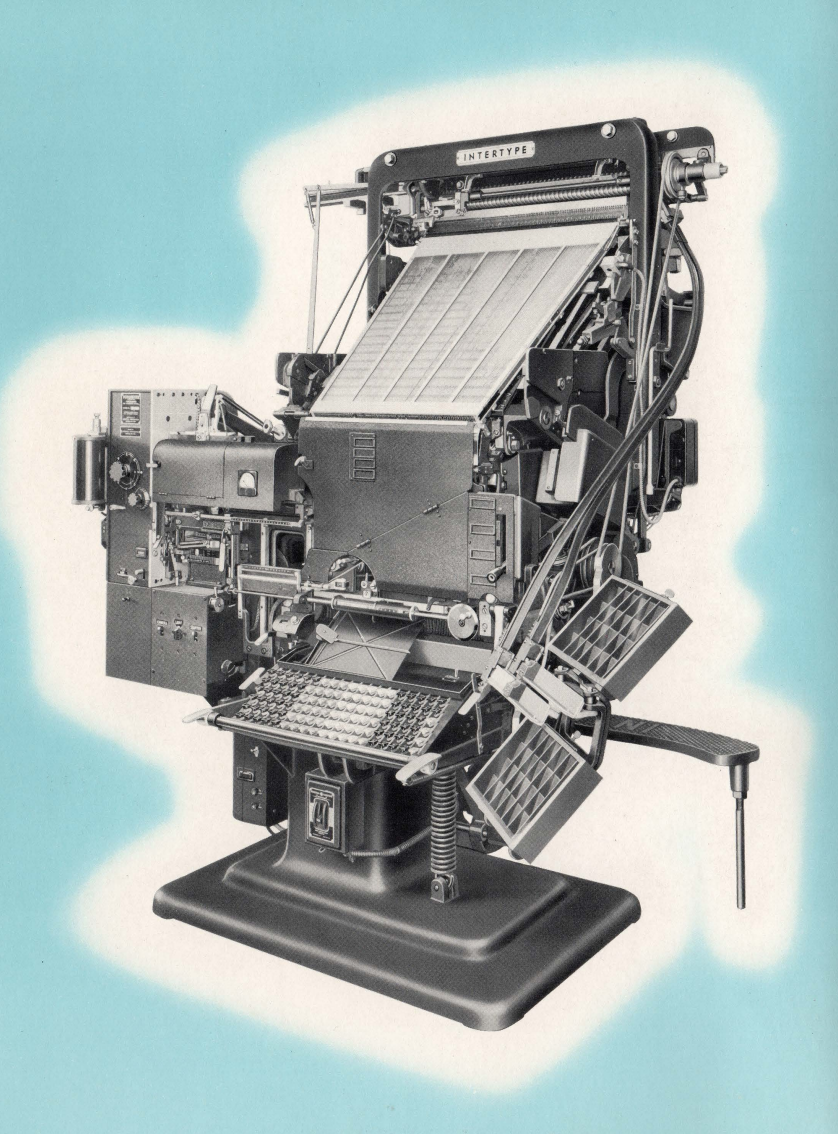

Figure: 1. The Intertype Fotosetter as introduced in the brochure of 1950 (Intertype Corporation, 1950). 2. The fotosetter at the Industrial Museum, Ghent, Belgium.
In the video below, Ebbe Sorensen, Officinet's chairman, explains the basics of the phototypesetter. The video was recorded at Vingårds Officin and has worked at Trykkeriet Strålfors in Ljungby for many years before it was donated to the Grafiska Museum in Helsingborg, where it stood until Officinet handed it over in 2013.
For the photosetter, Intertype also introduced a Desk Model. The difference with the regular Fotosetter is that the assembly and distribution of matrices is done by hand.

C 2021-2024 Maarten Renckens and other contributors. All rights reserved. All materials on this website are available for non-commercial re-use, as long as the original author is mentioned and a correct reference to this site is added. Thanks!
All materials are considered copyrighted by the author(s) unless otherwise stated. Some materials from other sources are used. If you find materials on this page which you consider not free from copyright, a notification is appreciated.
All collaborations and additional sources are more than welcome. Please contact info@maartenrenckens.com if you have materials that you deem valuable.